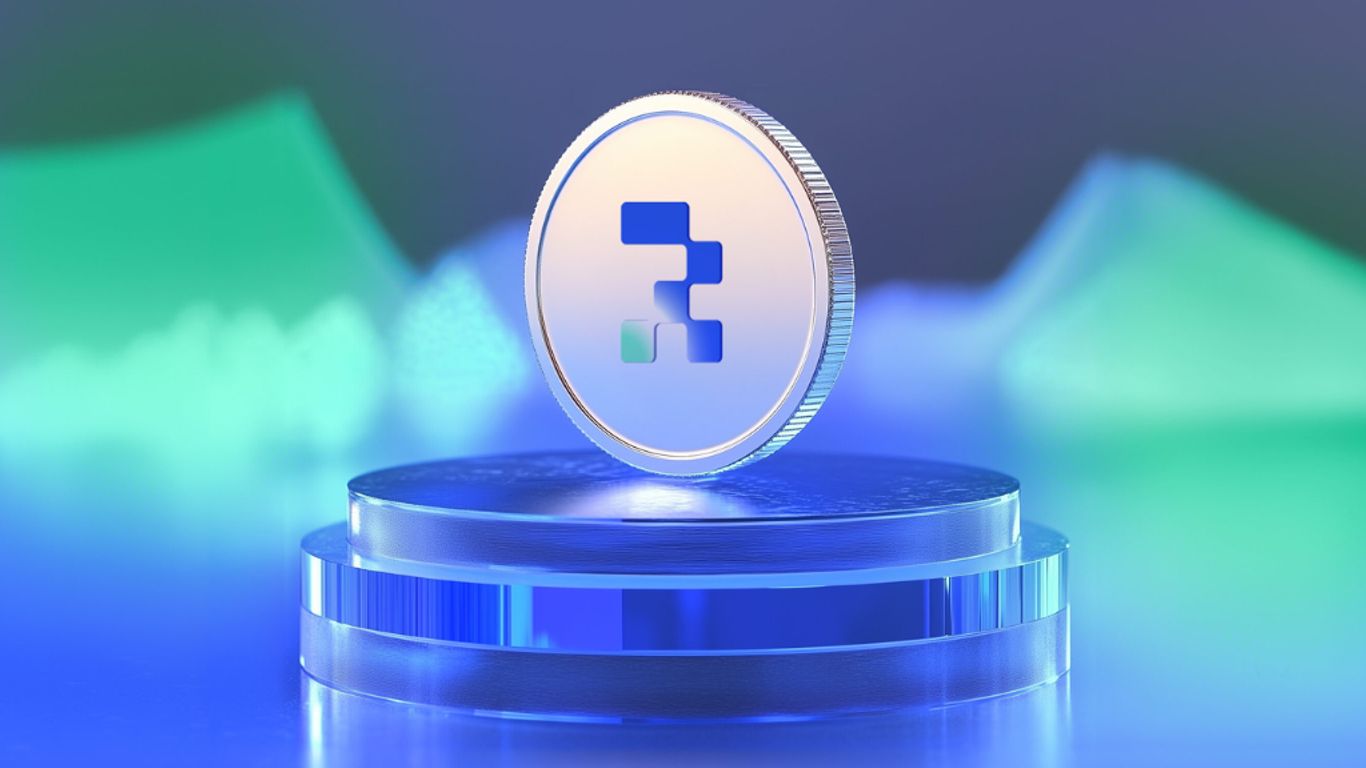Stablecoins backed by real-world assets are becoming increasingly important in today's financial landscape. They offer a blend of stability and innovation, making them an attractive option for various financial applications. This article explores how these stablecoins work, their benefits, challenges, and the future of their integration into the financial ecosystem.
Key Takeaways
- Stablecoins provide stability by being linked to real-world assets, reducing price swings.
- They enhance financial transactions by making them faster and more efficient.
- Tokenization of assets allows for fractional ownership, making investments more accessible.
- Regulatory frameworks are evolving to support the safe use of asset-backed stablecoins.
- Technological advancements are key to improving the security and efficiency of these financial tools.
Understanding Stablecoins Backed by Real-World Assets
Definition and Key Characteristics
Stablecoins are digital currencies designed to maintain a stable value by being pegged to real-world assets, such as fiat currencies or commodities. These coins aim to reduce volatility, making them more reliable for transactions. They are often backed by reserves held in a bank or other financial institution, ensuring that each stablecoin can be exchanged for a specific amount of the underlying asset.
Comparison with Other Stablecoins
Unlike other types of stablecoins, such as algorithmic stablecoins that rely on market mechanisms to maintain their value, real-world asset-backed stablecoins provide a more tangible form of backing. Here’s a quick comparison:
Importance in the Financial Ecosystem
Stablecoins backed by real-world assets play a crucial role in the financial ecosystem by:
- Enhancing transaction efficiency: They allow for quicker and cheaper transactions compared to traditional banking.
- Providing a hedge against inflation: By being tied to stable assets, they can help protect against currency devaluation.
- Facilitating access to new markets: They enable users to invest in assets that were previously hard to access.
The rise of stablecoins backed by real-world assets is reshaping how we think about money and investments, making them more accessible and reliable for everyone.
This innovative approach to digital currency is paving the way for a more stable financial future, where volatility is minimized and trust is enhanced through transparency and security.
The Evolution of Real-World Asset Tokenization
Historical Context and Early Attempts
The journey of tokenization began long before blockchain technology. In the 1990s, concepts like Real Estate Investment Trusts (REITs) and Exchange-Traded Funds (ETFs) emerged, allowing for digital representations of physical assets. These early attempts paved the way for today’s innovations, even if they faced limitations due to reliance on centralized systems.
Technological Advancements
The introduction of public blockchains in the 2010s revolutionized asset tokenization. With features like disintermediation and enhanced recordkeeping, blockchain technology allowed for direct, verifiable transactions. This shift enabled the creation of smart contracts, which automate ownership transfers and reduce costs, making asset management more efficient.
Current Trends and Innovations
Today, the market for tokenized real-world assets is booming. Major financial institutions are exploring tokenization to enhance liquidity and transparency. The total market value of on-chain real-world assets has surpassed $12 billion, with significant growth in sectors like tokenized U.S. Treasuries. This trend reflects a broader movement towards integrating traditional finance with blockchain technology, promising a more efficient and accessible financial landscape.
Tokenization is not just a trend; it represents a fundamental shift in how we manage and trade assets, making them more accessible and liquid than ever before.
Benefits of Stablecoins Backed by Real-World Assets
Enhanced Stability and Reduced Volatility
Stablecoins backed by real-world assets, like gold or real estate, offer greater stability compared to traditional cryptocurrencies. This is because their value is tied to tangible assets that are less prone to wild price swings. For example, gold has historically maintained its value over time, making it a reliable backing for stablecoins.
Increased Liquidity and Market Participation
These stablecoins can enhance liquidity in the market. By allowing fractional ownership of high-value assets, more investors can participate. Here are some key points:
- Fractional ownership makes it easier for small investors to access expensive assets.
- Faster transactions reduce the time and cost associated with buying and selling assets.
- Broader market access encourages more participants, increasing overall market activity.
Transparency and Security
Real-world asset-backed stablecoins provide a transparent and secure way to manage assets. The use of blockchain technology ensures:
- Immutable records that cannot be altered, providing trust in ownership.
- Smart contracts automate transactions, reducing the need for intermediaries.
- Proof of reserves guarantees that the stablecoin is backed by real assets, enhancing user confidence.
The integration of real-world assets into stablecoins not only enhances their stability but also bridges the gap between traditional finance and the digital economy, making transactions more efficient and secure.
Use Cases of Real-World Asset-Backed Stablecoins
Real Estate and Property Management
Real-world asset-backed stablecoins can transform the real estate market by enabling fractional ownership. This means that more people can invest in properties without needing large sums of money. Here are some benefits:
- Increased liquidity: Properties can be bought and sold more easily.
- Faster transactions: The process is quicker than traditional methods.
- Lower costs: Reduced fees associated with buying and selling.
Supply Chain and Inventory Management
In supply chains, these stablecoins can enhance efficiency by providing a transparent and secure way to track goods. Key advantages include:
- Real-time tracking: Know where your assets are at all times.
- Reduced fraud: Immutable records help prevent tampering.
- Streamlined payments: Instant transactions reduce delays.
Investment and Wealth Management
Stablecoins backed by real-world assets can serve as a reliable investment vehicle. They offer:
- Stable value: Protects against market volatility.
- Access to diverse assets: Investors can easily diversify their portfolios.
- Automated processes: Smart contracts can manage investments efficiently.
The potential of real-world assets (RWAs) is vast, allowing traditional assets to be converted into a superior blockchain-based format, enhancing market participation and accessibility.
Challenges and Risks in Implementing Real-World Asset-Backed Stablecoins
Regulatory and Legal Hurdles
Implementing real-world asset-backed stablecoins faces significant regulatory challenges. Different countries have varying laws regarding digital assets, which can create confusion and hinder adoption. Key issues include:
- Compliance with local regulations.
- Legal recognition of tokenized assets.
- Cross-border transactions that may not align with national laws.
Technological and Security Concerns
The technology behind stablecoins must be robust to ensure security and reliability. Some concerns include:
- Smart contract vulnerabilities that could be exploited.
- Data breaches that may compromise user information.
- Interoperability issues between different blockchain systems.
Market Adoption and Liquidity Issues
For real-world asset-backed stablecoins to thrive, they need widespread acceptance. However, several barriers exist:
- Limited understanding of the technology among potential users.
- Skepticism regarding the stability of these coins.
- Liquidity challenges that can arise if not enough users participate in the market.
The journey to implement real-world asset-backed stablecoins is filled with obstacles, but overcoming these challenges can lead to a more stable financial ecosystem.
Summary
In summary, while real-world asset-backed stablecoins offer promising benefits, they also come with significant challenges. Addressing regulatory, technological, and market adoption issues is crucial for their success.
Regulatory Landscape for Real-World Asset-Backed Stablecoins
Global Regulatory Frameworks
The regulation of stablecoins backed by real-world assets is evolving rapidly. Today, the largest asset-backed stablecoins are often collateralized by a mix of crypto-native assets and other real-world assets. This blend raises questions about how to regulate them effectively. Countries are working to create clear rules to ensure stability and protect investors.
Regional Differences and Impacts
Different regions have different approaches to stablecoin regulation. For example:
- United States: The SEC and CFTC have differing views on how to classify stablecoins, leading to a patchwork of regulations.
- European Union: The MiCA regulation aims to create a unified framework for stablecoins, focusing on transparency and investor protection.
- Asia-Pacific: Countries like China are exploring tokenization while maintaining strict controls on cryptocurrencies.
Future Regulatory Trends
As the market for real-world asset-backed stablecoins grows, we can expect:
- Increased Scrutiny: Regulators will likely pay more attention to how these stablecoins operate and their impact on financial systems.
- Harmonization of Rules: Efforts to create consistent regulations across borders will become more important.
- Focus on Consumer Protection: Regulations will likely emphasize protecting consumers from potential risks associated with stablecoins.
The regulatory landscape is crucial for the future of stablecoins, as it will shape their adoption and integration into the financial system.
Technological Infrastructure Supporting Real-World Asset-Backed Stablecoins
Blockchain and Smart Contracts
Blockchain technology is the backbone of real-world asset-backed stablecoins. It provides a secure and transparent way to record transactions. Smart contracts automate processes, ensuring that agreements are executed without the need for intermediaries. This reduces costs and speeds up transactions.
Interoperability and Standardization
For stablecoins to function effectively, they must be able to interact with various blockchain systems. This requires:
- Common standards for token creation and management.
- Protocols that allow different blockchains to communicate.
- Regulatory compliance to ensure that all transactions are legitimate.
Security and Privacy Measures
Security is crucial in the world of digital assets. To protect users and their investments, several measures are implemented:
- Regular audits of smart contracts to identify vulnerabilities.
- Encryption techniques to safeguard user data.
- Decentralized storage solutions to prevent data breaches.
The integration of blockchain technology with real-world assets is transforming finance, making it more accessible and efficient.
Conclusion
The technological infrastructure supporting real-world asset-backed stablecoins is essential for their success. By leveraging blockchain, ensuring interoperability, and prioritizing security, these stablecoins can enhance stability in the financial ecosystem.
Market Adoption and Growth Potential
Current Market Size and Projections
The market for real-world asset-backed stablecoins is rapidly expanding. Recent reports indicate that the market value of tokenized real-world assets (excluding stablecoins) has surpassed $12 billion. This growth is primarily driven by the increasing interest in tokenized U.S. Treasuries and other traditional assets.
Institutional Adoption and Support
Major financial institutions are beginning to recognize the potential of real-world asset-backed stablecoins. Some key points include:
- Increased liquidity in asset markets.
- Enhanced efficiency in transactions.
- Greater transparency in asset management.
Barriers to Widespread Adoption
Despite the promising growth, several challenges remain:
- Regulatory uncertainties that can hinder market entry.
- Technological limitations in existing blockchain infrastructures.
- Market education needed for potential users.
The future of real-world asset-backed stablecoins looks bright, but overcoming these challenges is essential for broader acceptance and integration into the financial ecosystem.
Future Prospects and Innovations
Emerging Trends and Technologies
The future of stablecoins backed by real-world assets is bright. Innovations in technology are paving the way for new opportunities. Here are some key trends to watch:
- Increased Tokenization: More assets, like real estate and commodities, are being tokenized, making them easier to trade.
- Integration with DeFi: Decentralized finance platforms are starting to use these stablecoins, enhancing liquidity and access.
- Regulatory Clarity: As regulations evolve, they will provide clearer guidelines for the use of these stablecoins.
Potential New Use Cases
The possibilities for real-world asset-backed stablecoins are expanding. Some potential new use cases include:
- Programmable Insurance: Smart contracts could automate insurance payouts based on real-world events.
- Fractional Ownership: Tokenization allows multiple people to own a piece of high-value assets, like art or real estate.
- New Financial Products: Innovative financial instruments could emerge, offering unique investment opportunities.
Long-Term Impact on the Financial Sector
The impact of these innovations could be significant. As the market matures, we might see:
- Enhanced Market Efficiency: Faster transactions and reduced costs could transform how assets are traded.
- Greater Accessibility: More people could invest in previously inaccessible markets, democratizing finance.
- Increased Market Size: Given the sheer scale of real-world assets that could be tokenized in the future, the stablecoin market cap could potentially rise from around USD 170 billion to much higher levels.
The journey of tokenization is just beginning, and its potential to reshape finance is immense.
Conclusion
In summary, the future of stablecoins backed by real-world assets is filled with promise. As technology advances and regulations become clearer, we can expect to see a more stable and inclusive financial ecosystem.
Case Studies and Real-World Examples
Successful Implementations
Stablecoins backed by real-world assets have shown promising results in various sectors. Here are some notable examples:
- Real Estate Tokenization: Companies like RealT have successfully tokenized properties, allowing fractional ownership and easier transferability. This has increased liquidity and accessibility for investors.
- Supply Chain Management: Projects like VeChain utilize stablecoins to streamline inventory management, enhancing transparency and efficiency in global supply chains.
- Carbon Credits: Platforms like ClimateTrade are using stablecoins to facilitate the trading of carbon credits, improving tracking and verification processes.
Lessons Learned
From these implementations, several key lessons have emerged:
- Regulatory Compliance: Ensuring adherence to local regulations is crucial for success.
- User Education: Educating users about the benefits and functionalities of tokenized assets fosters trust and adoption.
- Technological Infrastructure: A robust technological framework is essential for seamless transactions and security.
Future Opportunities
The future of stablecoins backed by real-world assets looks bright. Potential opportunities include:
- Expansion into New Markets: Exploring tokenization in sectors like art and collectibles.
- Integration with DeFi: Collaborating with decentralized finance platforms to enhance liquidity and market access.
- Innovative Financial Products: Developing new financial instruments that leverage the benefits of tokenization.
In the last decade, stablecoins have significantly impacted the financial landscape, providing stability and efficiency in transactions.
Overall, the case studies highlight the transformative potential of stablecoins backed by real-world assets, paving the way for a more inclusive and efficient financial ecosystem.
Comparing Different Types of Stablecoins
Fiat-Collateralized Stablecoins
Fiat-collateralized stablecoins are digital currencies that are backed by traditional fiat currencies, like the U.S. dollar. These stablecoins aim to maintain a 1:1 value ratio with their fiat counterpart. Examples include Tether (USDT) and USD Coin (USDC). They are popular for their stability and ease of use in transactions.
Commodity-Backed Stablecoins
Commodity-backed stablecoins are tied to physical assets such as gold or oil. This type of stablecoin provides a hedge against inflation and market volatility. For instance, Tether Gold (XAUT) is backed by physical gold, allowing users to hold a digital representation of their gold assets.
Algorithmic Stablecoins
Algorithmic stablecoins use algorithms to control their supply and demand, aiming to keep their value stable without being backed by any collateral. They can be more volatile than collateralized stablecoins, as seen in the case of TerraUSD (UST). These stablecoins rely on market mechanisms to maintain their peg.
Summary
Each type of stablecoin has its own strengths and weaknesses. Fiat-collateralized stablecoins offer stability and ease of use, while commodity-backed ones provide a hedge against inflation. Algorithmic stablecoins, while innovative, can be riskier due to their reliance on market dynamics. Understanding these differences is crucial for investors and users in the evolving financial landscape.
The rise of stablecoins reflects a growing demand for stability in the volatile world of cryptocurrencies. As the market matures, the role of stablecoins will likely expand, offering new opportunities for both users and investors.
Conclusion
In conclusion, stablecoins backed by real-world assets are changing the way we think about money and finance. They offer a more stable option in a world where prices can go up and down quickly. By linking digital currencies to things like gold or real estate, these stablecoins help keep their value steady. This is important for people and businesses who want to avoid the risks of traditional cryptocurrencies. As more people start using these stablecoins, we can expect to see improvements in how we trade and manage assets. Overall, the future looks bright for stablecoins, as they promise to make finance easier and safer for everyone.
Frequently Asked Questions
What are stablecoins backed by real-world assets?
Stablecoins backed by real-world assets are digital currencies that have their value tied to physical assets like property or gold. This helps keep their value steady.
How do these stablecoins differ from regular cryptocurrencies?
Unlike regular cryptocurrencies, which can have wild price swings, stablecoins aim to stay at a stable value by being linked to real-world assets.
What advantages do these stablecoins offer?
They provide more stability, easier trading, and better transparency in financial transactions.
Can you give examples of real-world assets used for backing stablecoins?
Sure! Common examples include real estate, gold, and even government bonds.
What are the risks involved with stablecoins backed by real-world assets?
Some risks include regulatory challenges, technology issues, and market acceptance.
How are these stablecoins regulated?
Regulations vary by country, but many places are working on clear rules to ensure safety and transparency.
What role does technology play in these stablecoins?
Technology like blockchain helps ensure secure transactions and keeps a clear record of ownership.
What does the future look like for stablecoins backed by real-world assets?
The future seems bright as more people and businesses recognize their benefits, leading to potential growth in this area.




